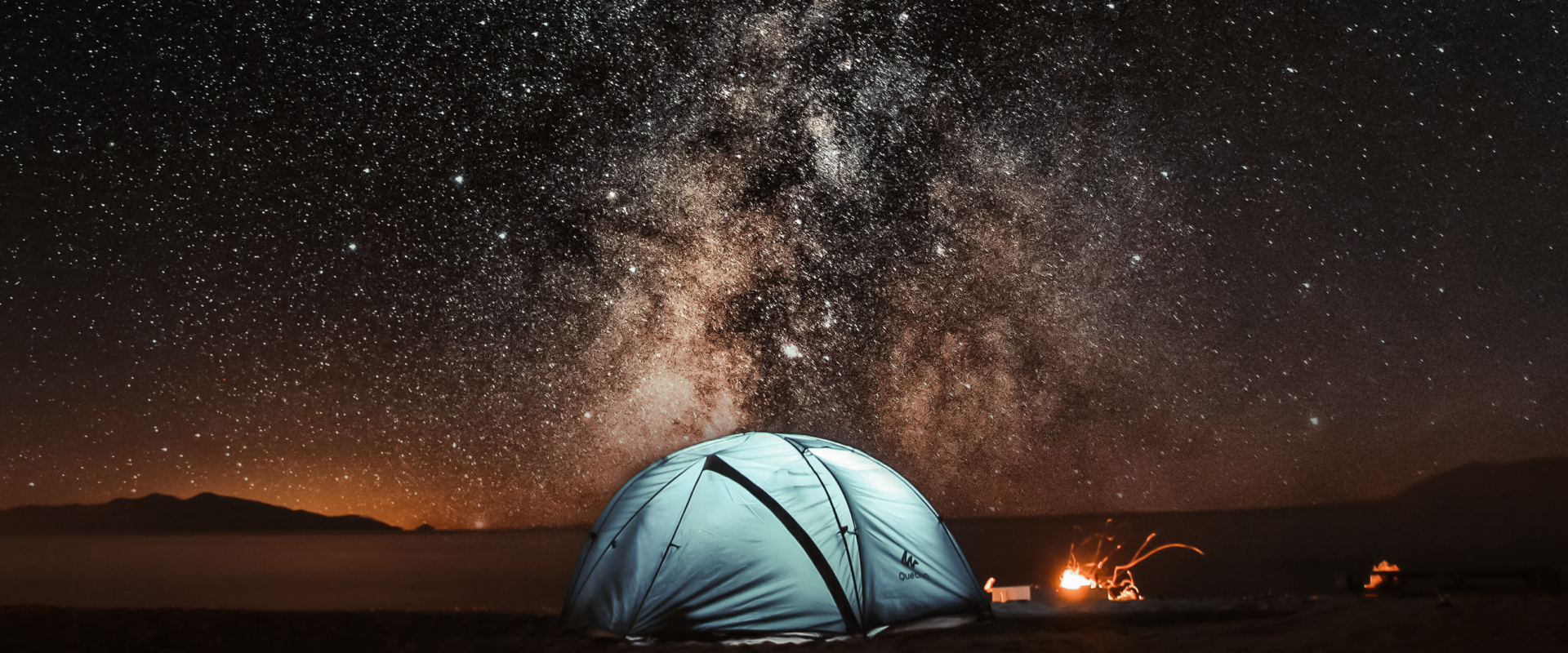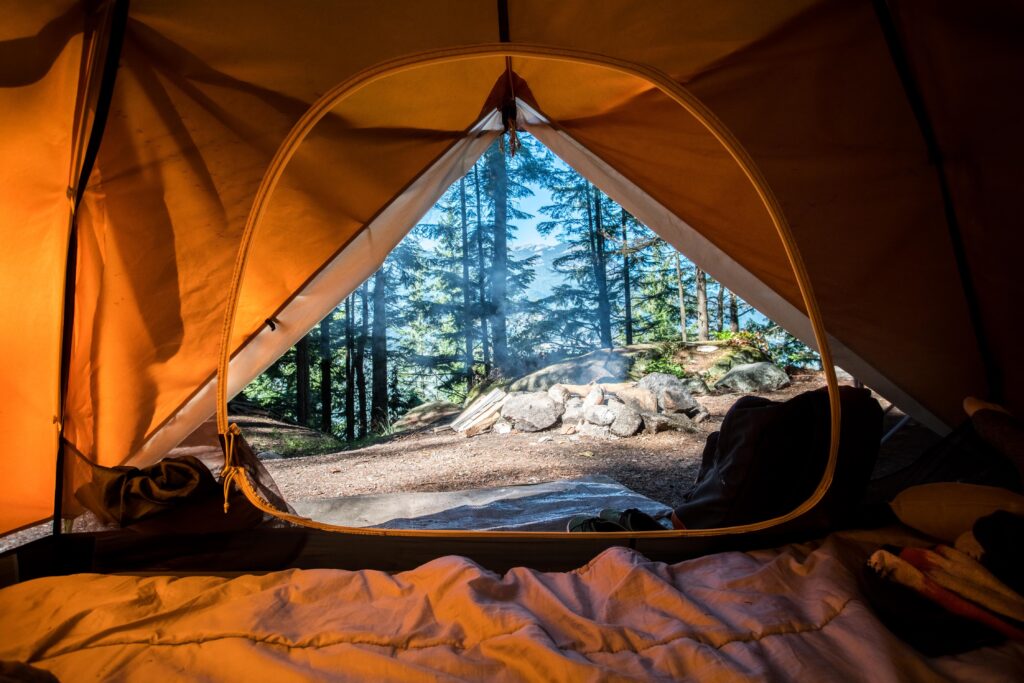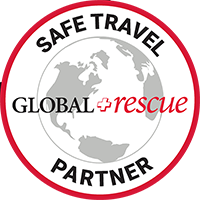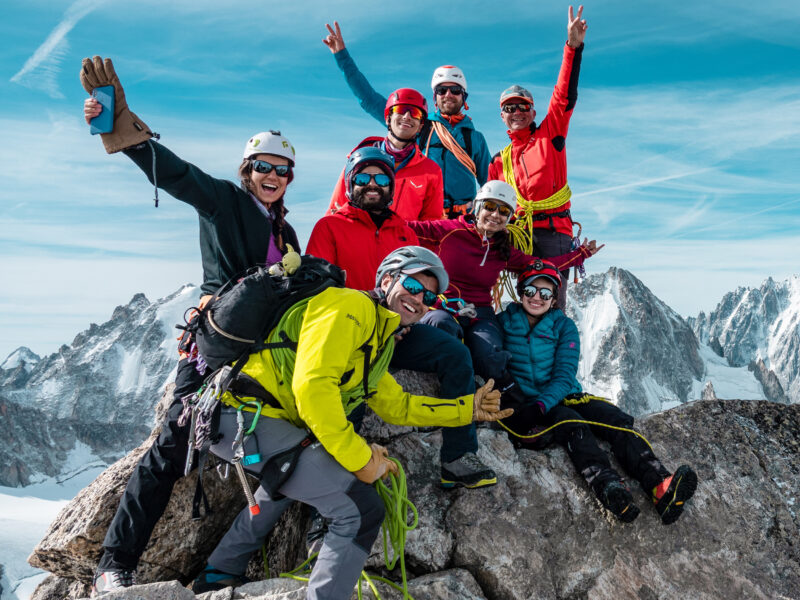BY Gino Traboulsi | January 19 2023
How To Get A Good Night’s Sleep In The Outdoors

Probably the most important items in your backpack are what make up your sleep system, also known as ‘’the big 3’’. They are the 3 heaviest, most expensive, and vital items in your backpack when heading on trekking trips. These include your sleeping pad, sleeping bag, and your tent, I’m going to try to help you understand how to pick the right gear for you.
Shelters
Your shelter doesn’t always have to be a tent. Some people use ultra-light tarps, hammocks, bivy sacks, mosquito nets or simply no shelter at all! There are plenty of options to choose from, and this all depends on the weather conditions, type of trail, personal preferences… It can definitely be overwhelming to make a decision, but the most popular item of them all is the tried and true 2-person tent. This is also what we use on most of our LHO adventures where camping is necessary, such the trek up Kilimanjaro, or the Inca Trail and Salkantay Trail adventures.
Your shelter will protect you from the elements like rain, wind, or snow. It will also keep you warm, especially if you share it with a partner! You’ve got head room for you to sit up and room for your backpack as well. My personal favorite feature of a tent is that the pesky bugs stay out!
Having a tent that is sturdy, waterproof, practical and built with high quality durable materials will last you a long time and I promise that you’ll love it as much if not more than your bedroom at home.

Sleeping Bags and Liners
Nobody wants to wake up in the middle of night sweating, or even worse shivering because you are freezing cold. Often times, this is because you didn’t bring the right sleeping bag on your adventure.
It’s important to have at least 2 sleeping bags that can cover most temperature ranges from -15 to 5 degrees, and take the right one depending on the weather conditions you’ll be facing.
You can read about which type of insulation to choose in our Synthetic vs Down article. However, in short, for the same amount of warmth, down is a lighter choice, and I also believe that it’s more comfortable; but it goes much deeper than just the weight-to-warmth ratio.
Bags also come in different shapes. The classic rectangular shape is spacious but heavier than most, and is only useful when car camping. The mummy bag is the most popular option as it’s the lightest shape and retains most of the heat created by your body. Lastly you have the spoon shaped bags, that are meant to provide a more comfortable night’s sleep for side sleepers, providing space for your shoulders, and from your knees down.

Here are some pro tips to help you sleep better in a tent.
- Never go to bed with wet clothes on, especially socks.
- Add a sleeping bag liner to increase the warmth by ~5 degrees.
- Put the clothes you will wear on the next day inside the sleeping bag while you sleep, this will keep them warm for when you need them in the morning and will also fill air providing a bit more insulation in your bag. It’s a win-win!
- Try not to wear clothes that are constricting, this will limit your blood flow and keep you colder rather than warmer
- Don’t fight the urge to pee! Especially if you’re cold. Your body is using it’s warmth towards the yellow liquid instead of sending it to your extremities where you need it the most
- Keep the zipper at your feet slightly open to prevent a sweaty foot box
- Sleep with your phone inside your sleeping bad so the battery doesn’t freeze and die overnight!
- Always sleep with your mouth and nose breathing outside the sleeping bag, this will prevent condensation building inside the bag. If you’re very cold, wear a buff over your mouth but still exhale outside.
- Boil water and sleep with your hot bottle of water. It’s like having a personal heater!
- If you can, learn to sleep on your back. It’s the best and most comfortable way to sleep while camping
Sleeping Pads
Sleeping pads are probably the hardest choice to make when purchasing one. As everyone has a different opinion on what’s comfortable and what’s not.
Some people like to be closer to the ground, others prefer thick pads. Some like horizontal baffles, other like them vertical. My suggestion is that you find a store that has a good amount of display models for you to try out and see which one you prefer the most.
You also mustn’t forget that your sleeping pad is also a huge contributor to how warm you’re going to be at night, as it insulates you from the ground, which we all know, is very cold. It’s important that on cold adventures, you bring a pad that is insulated.
If you’re unsure, look up the R-value of your pad. This is the metric that measures the level of insulation in sleeping pads. The same metric is used to insulate homes as well.
Another tip is that you should also find a sleeping pad that comes with a pump sack that you can attach to the nozzle. The benefits are that you won’t pass out from blowing all the air in your lungs into your pad, and you won’t be blowing moisture into your bag, which will condensate at night, reducing insulation, and if not dried properly, can turn into mold. The pump sack will also blow up your bag much faster than you can with your own breath.
Pillows
Most people opt not to bring a pillow on their adventures, as it’s difficult to find a comfortable one, and you can simply throw your unused clothes or down jacket into a stuff sack to make a pillow that’s as comfortable if not more than the blow-up ones you find on the market.
About Life Happens Outdoors
At Life Happens Outdoors, we believe in the power of nature to transform lives. As proud members of the Adventure Travel Trade Association (ATTA) and the World Travel & Tourism Council (WTTC), our team of certified guides and outdoor professionals is committed to the highest standards of safety, sustainability, and excellence.
Discover more about our story and mission on our Meet LHO page, or explore our curated adventures such as the Tour du Mont Blanc Trek, the Climb of Kilimanjaro, and Chasing the Northern Lights.














